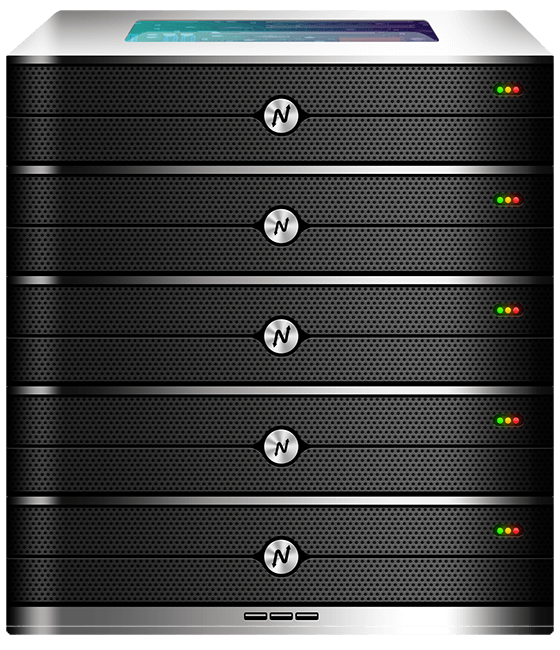In the world of web hosting, encountering a 503 code can feel alarming—but it doesn’t have to be. Understanding what a 503 code means and how to respond gives you a major advantage in keeping your website stable and your audience happy. When you host on infrastructure from a provider like XenaxCloud—with Indian servers that offer cost-effectiveness, low latency, global reach, strong security and scalability—you’re better positioned to prevent and resolve such errors quickly. Let’s explore how a 503 code arises, what it signals, and how to set up hosting so that you avoid it altogether.
What a 503 Code Means (and why it matters)
A 503 code—more officially, the HTTP status code “503 Service Unavailable”—indicates the server is temporarily unable to handle the request. It’s not a typical client-side issue (like a 404) but rather a server-side condition. For someone managing or supporting hosting, understanding this is key.
Why it matters globally: when a major user segment sees a 503 error, conversion drops, bounce increases and search engine crawlers may de-prioritise your site. As websites scale across regions, your hosting stack must be robust. Choosing a data centre with strong uptime, global connectivity and resource headroom helps mitigate risks.
WHY INDIAN SERVERS ARE A SMART CHOICE:
- Cost-effectiveness: Indian infrastructure tends to offer high calibre hardware and network at competitive cost.
- Low latency in Asia and competitive speed globally: For many campaigns spanning Asia, Middle East, even Europe, Indian servers deliver strong performance.
- Security, reliability and compliance: Reputable Indian data-centres meet global standards for redundancy, power, cooling, and network.
- Scalability for international businesses: As you expand, you don’t necessarily need multiple fragmented providers—one robust stack supports global growth.
In the next sections we’ll explore how to choose the right hosting plan, how speed & uptime tie into avoiding the 503 code, real-world examples, and more.

How to Choose the Right Hosting Plan to Avoid a 503 Code
When you pick a hosting plan, you’re effectively choosing how much “head-room” your server has before resource exhaustion triggers errors like a 503 code. Let me walk you through this with practical examples.
Assessing your resource needs
You’ll want to estimate: number of websites or apps, expected traffic volume (peak & average), storage needs, bandwidth demands, and geographic distribution of your users. For example, if you manage a single blog or small site, a shared hosting profile might suffice. But if your site handles higher concurrency or dynamic workloads, you’ll need more dedicated resources.
Matching plan to workload
From the fixed plan list:
- For lightweight sites: Shared Hosting Silver — 1 Website, 15GB Storage, 100GB Bandwidth, $1.79 is a cost efficient choice.
- For moderate traffic: Shared Hosting Gold — 3 Websites, 25GB Storage, 500GB Bandwidth, $2.39 gives more flexibility.
- If you anticipate real concurrency, dynamic apps or expect to scale: consider KVM VPS 2 — 4 Vcore CPU, 16GB RAM, 50GB Storage, 4TB Bandwidth, $10.79 or stepping up to KVM VPS 4 — 16 Vcore CPU, 64GB RAM, 100GB Storage, 10TB Bandwidth, $35.99.
As part of your planning you should also evaluate managed hosting vs self-managed. If you prefer hands-off operations, managed WordPress hosting or higher tier VPS may help avoid mis-configurations which can trigger 503 errors.
Upgrading path
One of the markers of a good hosting provider is how easily you can upgrade when you outgrow your plan. If you start small and traffic or workload increases, you want seamless migration to avoid resource bottlenecks that could cause a 503 code. A well structured provider with Indian data-centre, global reach and transparent plans is ideal.
Promotional shortcode: Here’s a relevant plan iframe/tag you could show in your page:
Speed, Uptime & Security Advantages That Prevent 503 Codes
Let’s link the 503 code to infrastructure metrics and show how hosting choices impact each.
Speed & Latency
If your server location is far from your user base, latency increases, resource queueing may happen, and you may hit thread or process bottlenecks—raising the risk of a 503 code. Hosting on Indian servers with good connectivity ensures your major user segments (especially Asia/Middle East) get low-latency access. That means less idle wait, fewer blocked threads and better overall performance.
Uptime & Reliability
A 503 code often arises when the server is overloaded, undergoing maintenance, or is mis-configured. A hosting provider with high-availability infrastructure, redundant power, networking and strong SLAs reduces the chances of your service going unavailable. For example, modern Indian data-centres are increasingly on par globally, giving you robust uptime.
Security & Server Health
If your server is under a DDoS attack, has mis-configured modules, or scheduled maintenance without proper fallback—it may respond with a 503 code. Good hosting plans include monitoring, automatic patching, proper resource allocation, firewalling, and system hardening—all of which help your site avoid “server unavailable” states.
By choosing a provider with strong infrastructure, you reduce risk of the 503 code and ensure your hosting stack remains responsive.
Real-World Use Cases: When a 503 Code Signals a Hosting Upgrade
Let’s look at how different businesses might hit a 503 code and what hosting plan growth looks like.
Use Case 1: Growing E-commerce Site
An e-commerce store targeting Asia and Middle East runs on a modest shared plan. As a major campaign launches, traffic spikes and the shared resources get saturated—leading to a 503 code when requests queue up or PHP processes max out. The solution: upgrade to a VPS like KVM VPS 2 — 4 Vcore CPU, 16GB RAM, 50GB Storage, 4TB Bandwidth, $10.79 or higher.
Use Case 2: SaaS Platform Scaling Globally
A SaaS product serving Europe, Asia and Africa is hosted in India for cost-efficiency and global reach. They begin on a mid-level VPS, but as user concurrency grows, they start seeing 503 codes during peak hours. They move up to KVM VPS 4 — 16 Vcore CPU, 64GB RAM, 100GB Storage, 10TB Bandwidth, $35.99, implement auto-scaling, and deploy edge caching to absorb load.
Use Case 3: Event-Driven Traffic Spike
A media company hosts a live event with high concurrent viewers. Their shared hosting plan is inadequate; the server returns multiple 503 codes as traffic surges, modules get blocked and queueing occurs. They plan ahead: choose a higher tier plan, perhaps even a dedicated server, and ensure their Indian data-centre provider supports quick provisioning and high bandwidth.
In each use case, the 503 code becomes a symptom of infrastructure limits or mis-alignment between resources and workload. By selecting the correct hosting tier and infrastructure provider upfront, you reduce the risk of downtime or degraded user experience.
Why Indian Servers Can Handle Global Traffic Efficiently (and avoid 503 codes)
It might seem counter-intuitive to host on Indian servers for a global audience, but in fact this can help you avoid errors like the 503 code by giving you strong infrastructure and bandwidth head-room.
Global Network and Peering
India is a key node for submarine cables linking Asia, the Middle East, Africa and Europe, meaning network connectivity from India to many global regions is strong. With proper backbone and peering, hosting global traffic from India is feasible and efficient. That means fewer regional bottlenecks, fewer saturated routes, and less chance of resource exhaustion causing a 503 code.
Cost-Efficiency Enables Oversizing
Since Indian infrastructure often comes with lower cost per resource unit, you can provision larger CPU, RAM and bandwidth at equivalent cost to other regions. That extra head-room helps absorb traffic spikes or unexpected load that would otherwise trigger a 503 code due to resource exhaustion.
Scalability and Support
A global hosting provider based in India typically supports 24/7 operations, multilingual support and fast provisioning of new servers or upgrades. When your server begins to show early signs of overload (e.g., high queue lengths, high CPU) you can scale before an actual 503 code occurs. Good providers will let you move from shared → VPS → dedicated seamlessly.
Example Architecture
You can host your origin infrastructure in India for core services, and use a CDN for static content globally. That offloads traffic, reduces load on the origin server and lowers chance of resource-limiting conditions causing a 503 code. You thus build a global-ready hosting stack with local cost advantages, reducing risks.
Comparison: Indian vs Other Regions (in context of 503 Code and Infrastructure)
Here’s a comparison table focusing on how hosting regions affect your risk of errors like a 503 code—emphasising reliability, provisioning, support and general service health.
| Criteria | Indian Servers | US / Canada / Germany / UAE Servers |
|---|---|---|
| Provisioning Speed & Flexibility | Fast, often same-day, strong for scale-up | Varies; strong in region but may be slower globally |
| Global Traffic Handling & Head-Room | Good connectivity to Asia/Middle East and global via strong backbone | Excellent in local region; may need extra CDN or edge nodes for Asia |
| Cost-to-Compute & Head-Room | Generally more cost efficient enabling larger resources | Higher cost for equivalent global reach specs |
| Support & Global Coverage | 24/7 support overlapping Asia, ME, Europe time-zones | Strong in region; timezone overlap may vary for Asia/Middle East |
| Risk of Saturation Leading to 503 Code | Lower if resources are oversized and network is strong | Higher if servicing traffic outside region without scaling or CDN |
From a 503-error-prevention standpoint, hosting with an Indian-based provider with global connectivity often offers more buffer and flexibility for international traffic.
FAQ
What is the difference between Indian VPS and foreign VPS?
An Indian VPS is physically located in India, giving lower latency for Asian/Middle East users and often cost advantages; a foreign VPS may optimise for local region performance but could cost more or have higher network latency elsewhere.
Can Indian servers handle global website traffic?
Yes—when the hosting provider offers strong network peering, global backbone connectivity and you use edge caching/CDN, Indian servers can serve global traffic effectively.
Is Indian hosting cost-effective for international users?
Yes—cost-effective infrastructure in India allows you to allocate savings to bandwidth, redundancy, monitoring and avoid bottlenecks that might trigger a 503 code.
How reliable is XenaxCloud hosting?
XenaxCloud provides Indian-data-centre infrastructure, scalable plans, strong uptime and professional support—making it a robust choice with less risk of errors like a 503 code.
How to choose the right server for my business?
Assess traffic volume, geographic distribution, resource needs (CPU/RAM/Storage/Bandwidth) and growth potential, then pick a plan with enough head-room and upgrade path to avoid bottlenecks that lead to a 503 code.
Conclusion
Encountering a 503 code doesn’t have to be a disaster—it’s a signal your server is under stress or unavailable, and with the right hosting setup you can avoid it entirely. By choosing high-quality infrastructure—such as Indian-based hosting from XenaxCloud that delivers cost-efficiency, strong global connectivity, security and scalability—you build in the resilience needed to serve your users reliably. Start with a plan suited to your stage (for example Shared Hosting Gold for multiple websites, or KVM VPS 2 and KVM VPS 4 as you scale), monitor resource usage, and scale ahead of bottlenecks. Ready to upgrade your hosting infrastructure and reduce the risk of errors like a 503 code? Buy hosting from XenaxCloud today and test it risk-free—every plan includes a 15-day money-back guarantee. Check out the latest deals and offers on the XenaxCloud Offers Page and secure your infrastructure now.






